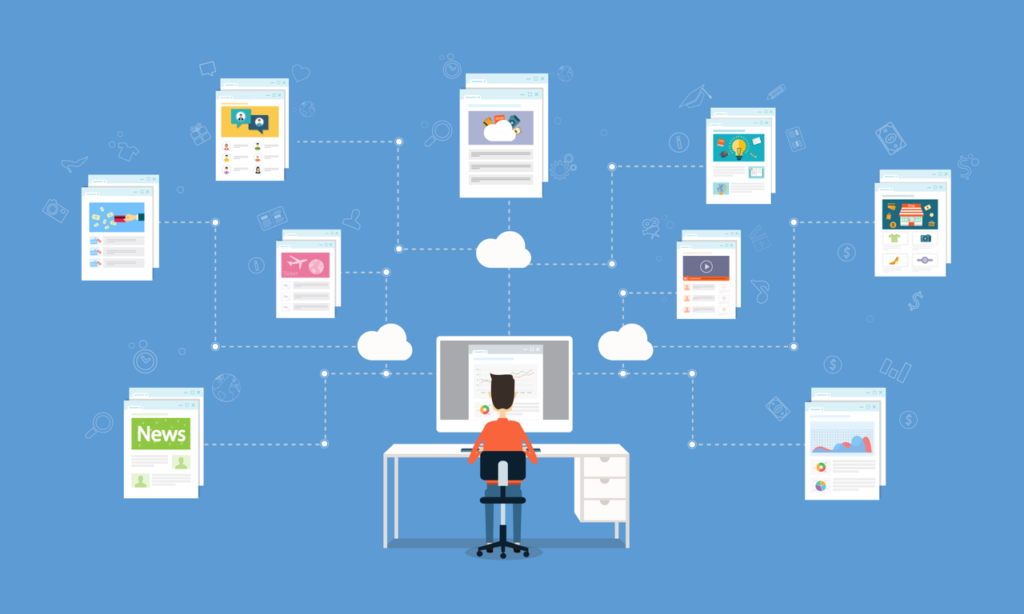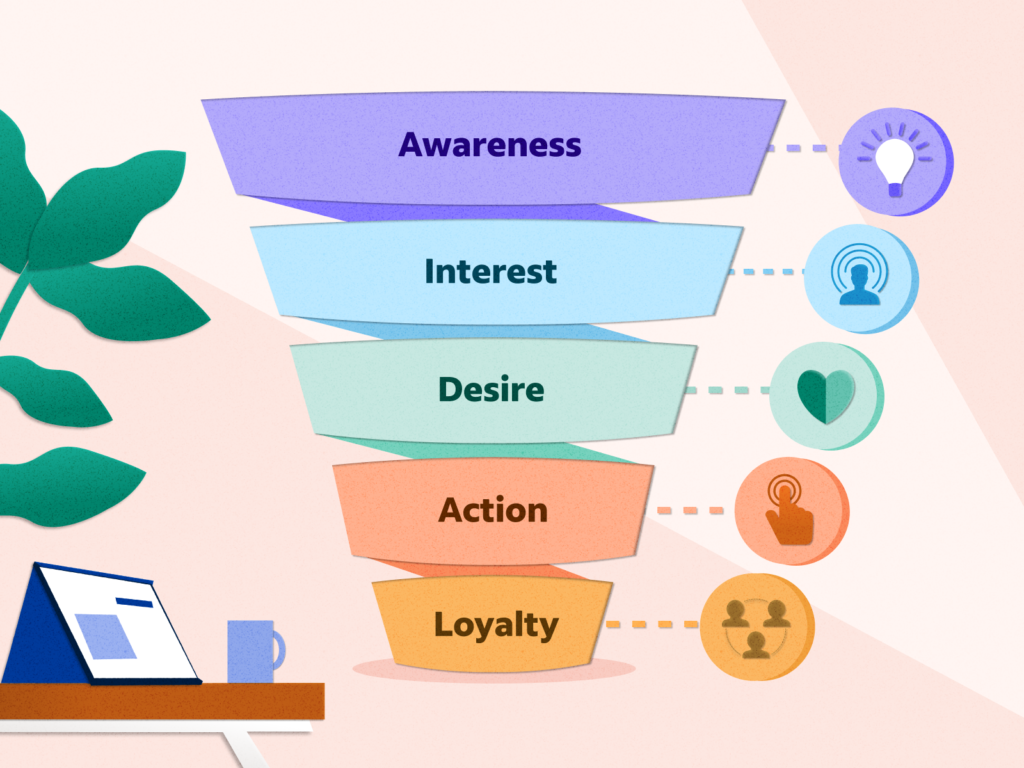Email marketing is an essential part of any real estate business’s marketing strategy. It’s an effective way to stay top-of-mind with your clients and prospects and to nurture leads until they’re ready to take action. But with so many businesses sending emails, how can you make sure your messages stand out?
In this complete guide to email marketing for real estate businesses, we’ll cover everything you need to know to create effective campaigns that get results. From building your email list to automating your emails, we’ll provide tips and best practices to help you make the most of this powerful marketing channel.
Table of Content
- Does Email Marketing work in 2023?
- Types of email in marketing
- Building Your Email List
- Creating Effective Email Campaigns
- Segmenting Your Email List
- Automating Your Email Marketing
- How to Write Great Sales Copy
- Generate business from the campaign
- Email Marketing Metrics
- Best Tools for Email Marketing
- Pros & Cons of Email Marketing
- Conclusion
- FAQs
Does Email Marketing work in 2023?

Yes, email marketing still works in 2023 and remains one of the most effective digital marketing strategies. According to Statista, the number of email users worldwide is projected to reach 4.6 billion by 2025, and this indicates that email is still a popular and widely used communication channel.
Here are some reasons why email marketing is still relevant in 2023:
Personalization: Email marketing allows businesses to tailor their messages to their audience’s interests and preferences. Personalized emails have higher open and click-through rates, and they can help to build stronger relationships with customers.
Cost-effective: Email marketing is one of the most cost-effective marketing strategies available. It is much cheaper than traditional advertising methods such as TV or radio ads, and it can be automated to save time and effort.
Measurable results: Email marketing provides businesses with measurable results such as open rates, click-through rates, and conversion rates. This data allows businesses to analyze the effectiveness of their campaigns and make necessary improvements.
Mobile-friendly: With the growing use of mobile devices, businesses must have mobile-friendly content. Most email marketing platforms enable companies to generate mobile-responsive emails that can be viewed on any device.
Integration with other marketing channels: Email marketing can be integrated with other marketing channels such as social media and content marketing to create a cohesive marketing strategy.
Types of email in marketing

Emails in email marketing are frequently classified based on the recipient’s level of engagement or relationship with the company. In marketing, there are three primary types of emails:
Cold emails: These are emails sent to people who have never interacted with the company before. Cold emails can be difficult to send because they require a great deal of effort to establish trust and build a relationship with the receiver.
A new home cleaning business, for example, might send cold emails to prospective customers in a specific neighborhood, introducing themselves and offering a discount on their first cleaning.
Warm emails: These are emails sent to people who have expressed an interest in the brand by joining up for a newsletter or following the brand on social media.
A warm email’s purpose is to nurture the relationship and keep the receiver engaged with the brand.
A sports equipment company, for example, could send a warm email to customers who have previously bought running shoes, offering them a discount on a new line of running gear.
Hot emails: These are emails sent to people who are very interested in the company, such as loyal customers or those who have recently made a purchase.
It’s important to note that the categorization of emails can vary based on the specific business and marketing strategy.
Without Quality Leads, Email Marketing is of No use.
With the Help of Social Media Here is a Step by Step Framework “How to Generate High-Quality Leads with Minimum Spends.
Create your First Campaign
I. Building Your Email List

Before you can start sending emails, you need a list of subscribers.
Here are some tips for building your email list:
- Capture email addresses from website users: Include an opt-in form on your website to collect email addresses from visitors. Make a valuable exchange offer, such as a free e-book or access to exclusive material.
- Make lead magnets: Lead magnets are incentives you give away in return for someone’s email address. They may include free e-books, checklists, or seminars.
- Use social media to grow your email list: Promote your lead magnets on social media and encourage people to join your email list.
II. Creating Effective Email Campaigns

Once you have a list of subscribers, it’s time to start sending them emails. Here are some tips for creating effective email campaigns:
- Define your campaign goals: Before you begin writing your email, decide what you want to accomplish with the campaign: drive visitors to your website, advertise a new listing, or nurture leads.
- Write subject lines and email copy: Your subject line is the first thing your subscribers will see, so make it catchy. Keep your email copy brief and to the point, and include images. to make the writing more readable.
- Create visually appealing emails: Create clean, professional emails that appear good on both desktop and mobile devices.
- Optimize for mobile devices: Because mobile devices account for more than half of all email opens, make sure your communications are mobile-friendly.
- Make a sense of urgency: Use urgency to persuade subscribers to move. For example, you could advertise a property with a deadline for offers or offer a limited-time discount.
- Emails that are personalized have better open and click-through rates. Use the names of your subscribers in the subject line and throughout the text.
- Conduct an A/B test: To find out what works best for your audience, experiment with various subject lines, email copy, and calls to action.
Want More Leads & Sales for Your Business, Use the “Behavioural Email Marketing” Technique for 4X Your Result. Here is Step 1 …
III. Segmenting Your Email List
Not all subscribers are the same. By segmenting your email list, you can send targeted messages to specific groups of subscribers. Here’s how to do it:
Why segmentation is important?
Segmentation allows you to send more relevant messages to your subscribers.
This can increase open and click-through rates, and ultimately lead to more conversions.
Types of segmentation?
There are many ways to segment your email list, including by
demographics, interests, and behavior.
How to segment your email list?
Use your email marketing software to segment your list based on the criteria that are most important to your business.
Creating targeted campaigns for each segment: Once you’ve segmented your list, create targeted campaigns that speak directly to each group of subscribers.
IV. Automating Your Email Marketing

You can use email marketing automation to send the right message to the right person at the right moment. Here’s where to begin:
Define your automated goals.
Define your goals before you begin setting up automated communications. Do you want to nurture leads, promote a new listing, or stay in contact with previous customers?
Choose the correct automation software: There are numerous email marketing automation tools available; select one that meets your company’s needs and budget.
Set up your automation workflows
Create automated workflows that send subscribers targeted communications based on their behavior or other factors.
Personalize your automated emails: Make your automated emails more engaging by including your users’ names and other personalized information.
Evaluate and improve your automatic workflows: Keep an eye on your automation processes and experiment with different messages to see what works best for your audience.
V. Ensuring Email Deliverability
Even the most well-designed emails will be ineffective if they do not reach your users’ inboxes. Here are some pointers to ensure email deliverability:
Use the best email marketing provider: Select an email marketing provider with a good name and that takes precautions to guarantee high deliverability rates.
Maintain the cleanliness of your email list: To increase deliverability, remove inactive or invalid email names from your list.
Monitor your email sender’s reputation: Make sure your email sender’s reputation is good. Deliverability rates can suffer if your reputation number is low.
Use spam trigger words judiciously, and avoid using all caps in your subject lines.
Write a Great Email Copy

Writing great copy for email marketing is a skill that can be learned and developed with practice. Here are some tips to help you write effective email copy:
Define your audience: Before you begin composing, you should determine who your target audience is. This will enable you to tailor your message to their specific interests and requirements.
Begin with a captivating subject line: Because the subject line is the first thing your audience sees, it must be eye-catching. Keep it brief, straightforward, and to the point.
Write a clear and concise message: so write a straightforward and concise statement. Keep your communication brief, concise, and to the point. Make sure your content is simple to read and comprehend.
Use a conversational tone: Write as if you were speaking with your viewer. Make use of language that is simple to comprehend and relatable.
Use a call to action: Include a clear call to action in your email that informs your reader what you want them to do next. Make it simple for them to respond.
Personalize your message: Include your reader’s name in your letter. This can help you bond with your reader and increase their likelihood of engaging with your email.
Use visuals to break up prose and make your communication more visually appealing. To help illustrate your point, use images, videos, and infographics.
Experiment with various subject lines, messages, and calls to action to see what works best for your audience. Analyze the findings and adjust your strategy as needed.
By following these tips, you can write great copy for email marketing that engages your audience and drives results.
Generate business from the campaign
To Generate Quality leads we need to build a Powerful sales funnel pipeline to fuel the business
What is a Sales Funnel?

Certainly! A sales funnel is a model that describes the steps a potential customer takes to become a customer of a business.
The sales funnel typically consists of four stages, although the number and names of the stages may vary depending on the business or industry.
Without Landing pages, your funnel can’t generate more quality leads.
Here is Step by Step guide to Creating a Landing page
Funnel Consists of 4 stages :
Awareness: This is the stage at which the potential customer becomes mindful of the company, product, or service. This stage aims to raise brand awareness and attract new customers to the company.
Interest: At this point, the potential client has shown an interest in the company and is actively researching the product or service. The goal of this step is to provide more information to the potential customer and persuade them that the company can solve their problem.
Decision: At this point, the potential customer decided to make a purchase and is considering his or her options. This stage aims to convince the potential customer to choose the company over competitors.
Action: The final step is when a potential customer converts to a customer by making a purchase. The goal of this step is to provide the customer with a simple purchasing process.
Measuring Email Marketing Success

There are several Key Performance Indicators (KPIs) that are essential to track in email marketing. Here are some of the most important ones along with their formulas:
Open rate: It represents the percentage of email recipients who opened the email.
Formula: (Number of emails opened / Number of emails delivered) x 100
Click-through rate (CTR): It measures the number of clicks on links within the email, divided by the total number of delivered emails.
Formula: (Number of clicks / Number of emails delivered) x 100
Conversion rate: It measures the percentage of email recipients who completed a desired action, such as making a purchase or filling out a form.
Formula: (Number of conversions / Number of emails delivered) x 100
Bounce rate: It represents the percentage of emails that were not delivered to the recipient’s inbox.
Formula: (Number of bounced emails / Number of emails sent) x 100
List growth rate: It measures the rate at which your email list is growing over some time.
Formula: [(Number of new subscribers – Number of unsubscribes) / Total number of email addresses on the list] x 100
Revenue per email: It represents the amount of revenue generated per email sent.
Formula: Total revenue generated / Number of emails sent
By tracking these metrics, you can identify what’s working and what’s not, and make changes to improve your email marketing campaigns over time.
Best Tools for Email Marketing

There are several email marketing campaign tools accessible, each with its own set of features and capabilities. The following are some of the finest tools for email marketing campaigns:
Mailchimp is a well-known email marketing platform that enables users to build and send email campaigns, manage subscriber lists, and track campaign performance. It has a plethora of features, such as email templates, automation workflows, and comprehensive analytics.
Constant Contact is an email marketing tool that enables users to build and send email campaigns, manage contact lists, and track campaign performance. It also has some tools, such as email templates, A/B testing, and social media integration.
ConvertKit: ConvertKit is a popular email marketing tool for bloggers, podcasters, and content creators. It offers a range of features, including email automation workflows, subscriber tagging, and detailed analytics.
HubSpot: HubSpot is a comprehensive marketing platform that includes email marketing, CRM, social media management, and more. Its email marketing features include email templates, automation workflows, and detailed analytics.
Pros & Cons of Email Marketing
Email marketing remains one of the most effective forms of marketing in 2023. Here are some pros and cons to consider:
Pros:
Low-cost method: Email marketing is a low-cost method to reach a large number of people, making it a low-cost marketing strategy.
Personalization: Email marketing enables you to tailor your message to your intended audience, increasing engagement and conversions.
Measurable: You can monitor the success of your email campaigns, such as open rates, click-through rates, and conversion rates, which can provide valuable insights into the efficacy of your marketing strategy.
Targeted: You can segment your community and deliver targeted messages to specific groups with email marketing, increasing the chances of conversion.
Simple to automate: Many email marketing systems support automation, making it simple to send automated messages and follow-up emails to your list.
Cons:
Oversaturation: With the abundance of emails people receive every day, it can be challenging to get your message noticed and read.
Spam filters: Spam filters can sometimes flag legitimate marketing emails, making it harder to reach your audience.
Lack of personalization: If your email marketing messages are not personalized or relevant to the recipient, they are more likely to be ignored or marked as spam.
Opt-out rates: Some people may unsubscribe from your email list, reducing the size of your audience and limiting your reach.
Compliance: Email marketing is subject to legal requirements, such as the CAN-SPAM Act in the United States, which can be time-consuming and costly to comply with.
Do & Don’t of E-mail Marketing

Do
- Build an email list of people who have opted-in to receive your emails.
- Personalize your emails with the recipient’s name and other relevant details.
- Use a clear and concise subject line that accurately reflects the content of the email.
- Provide valuable content that is relevant to your audience’s interests.
- Use a clear and easy-to-read format with a simple and visually appealing design.
- Include a clear call-to-action (CTA) that prompts recipients to take action, such as making a purchase, signing up for a newsletter, or visiting your website.
- Test and optimize your email campaigns by tracking open rates, click-through rates, and other metrics to improve your results.
Dont’s
- Don’t Purchase email lists or use unsolicited emails to reach potential customers.
- Don’t Use deceptive subject lines or misleading content to get people to open your emails.
- Don’t Overwhelm your subscribers with too many emails or irrelevant content.
- Don’t Use too many images or flashy graphics that could make your email appear spammy.
- Don’t Neglect to include an easy opt-out or unsubscribe option in your emails.
- Don’t Use overly salesy language or pushy CTAs that could turn off your audience.
- Don’t Ignore the importance of mobile optimization, as a large percentage of emails are opened on mobile devices.
Conclusion
Email marketing is an effective instrument for real estate companies. You can create a winning email marketing strategy that generates results by building your email list, creating effective email campaigns, segmenting your list, automating your emails, ensuring email deliverability, and measuring your success.
Always remember to add value to your subscribers’ inboxes and personalize your communications to make them more engaging. With these best practices and tips, you’ll be well on your way to creating effective email campaigns for your real estate company.
Frequently Asked Questions
Promotional Emails: These emails are designed to promote a specific product or service, to encourage the recipient to make a purchase.
Newsletters: These emails provide updates and information about a company, its products, and its industry. They are typically sent regularly and are designed to keep subscribers engaged.
Welcome Emails: These emails are sent to new subscribers to welcome them to the company and introduce them to its products and services.
Abandoned Cart Emails: These emails are sent to customers who have added items to their online shopping cart but haven’t completed their purchase. They are designed to remind the customer of the items in their cart and encourage them to complete the purchase.
Despite the rise of other digital marketing channels like social media and messaging apps, email remains a popular communication tool for businesses and consumers. Many people still check their email regularly, and email can be a powerful way to connect with customers and prospects.
Mailchimp
Constant Contact
AWeber
GetResponse
Campaign Monitor
ActiveCampaign
ConvertKit
Drip
Sendinblue
HubSpot Email Marketing
These are all great options with different features and pricing plans, so it’s important to research and find the one that best fits your needs and budget.
Social media is a powerful tool for reaching potential customers, but simply having a presence on social media is not enough to drive sales.


